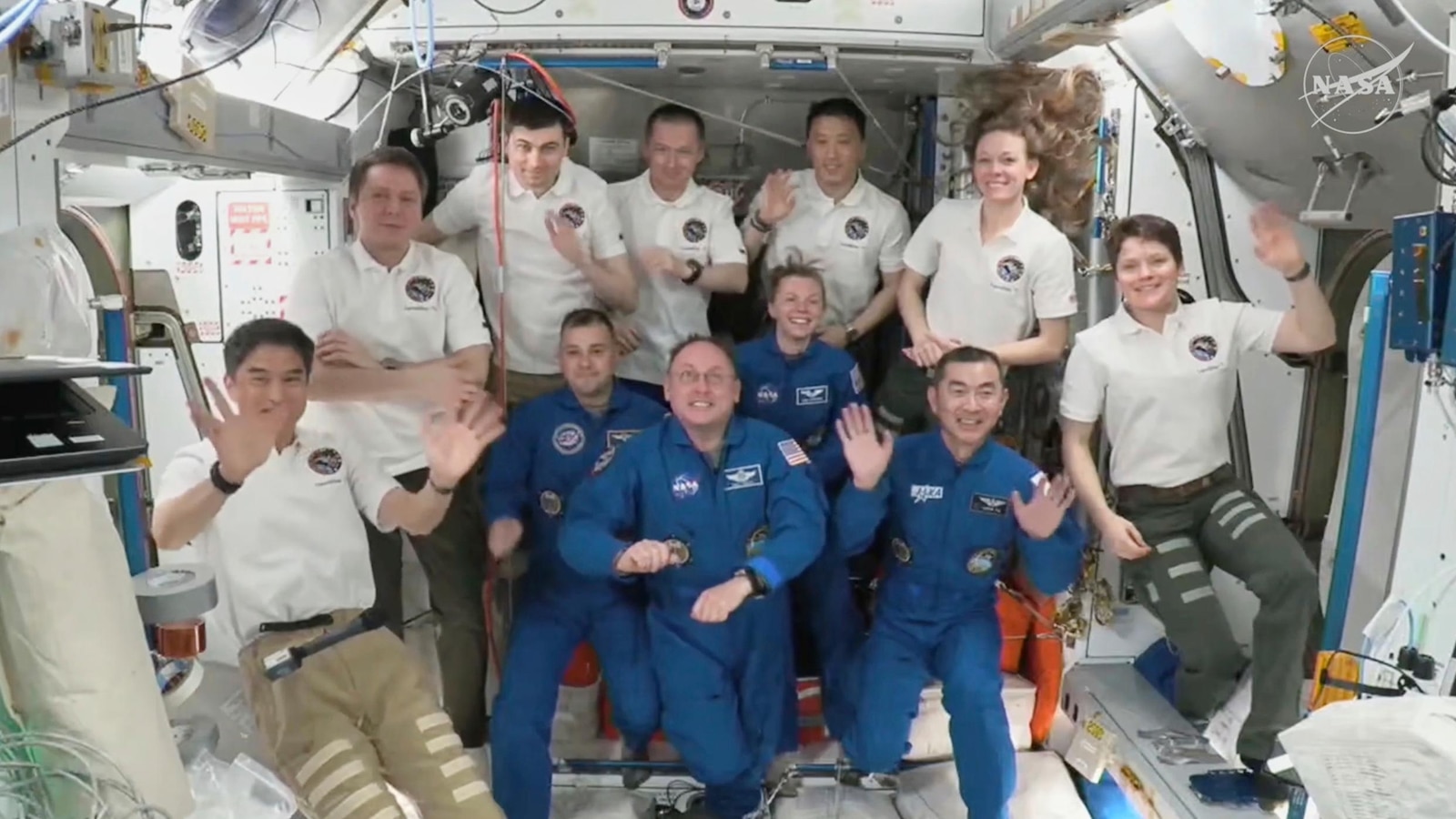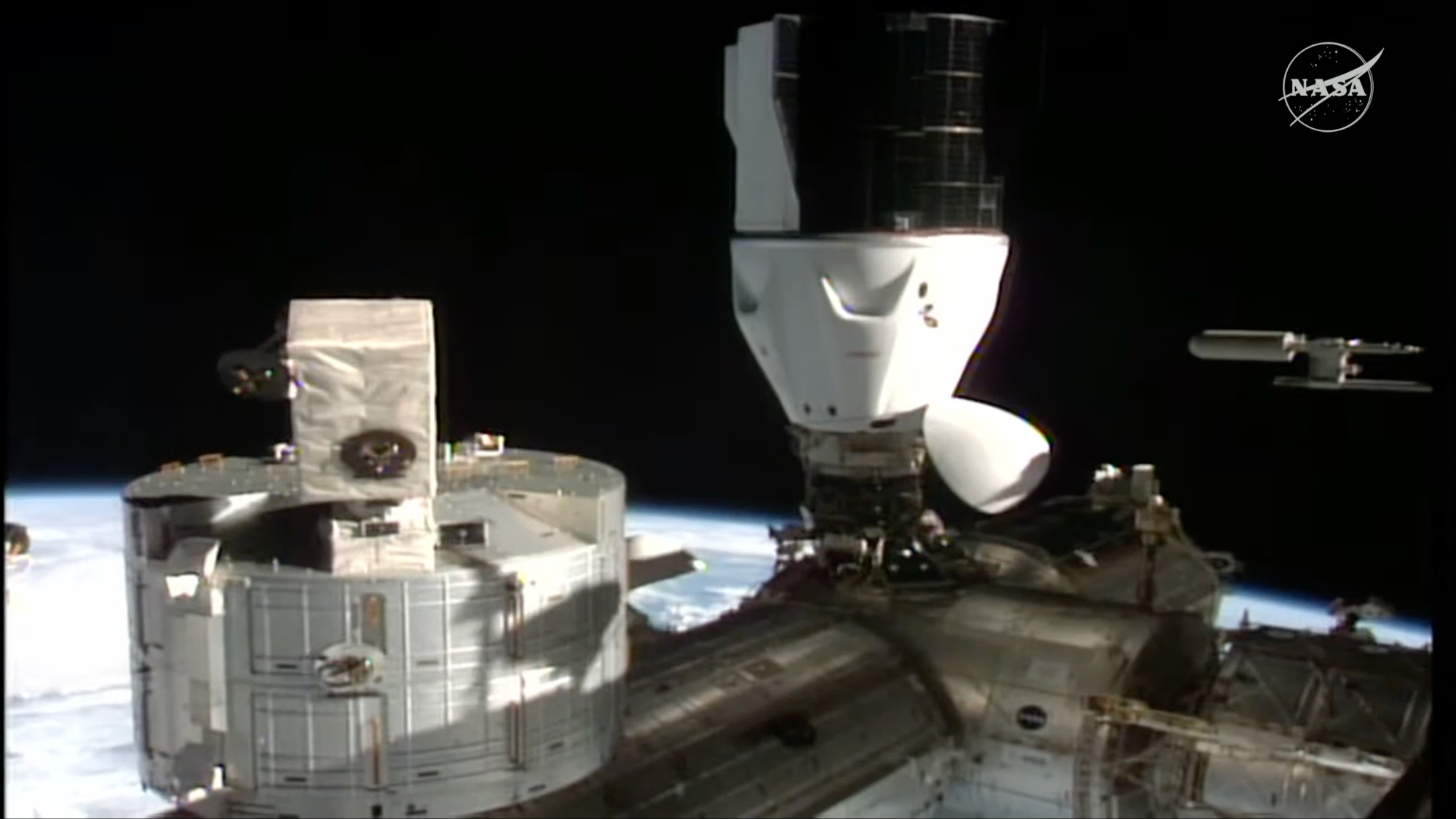U.S. Space Force Launches Mini Space Shuttle for Long-Duration Mission

Introduction
Last week, a secretive mini space shuttle launched from the Space Coast in Florida, marking the sixth mission for the U.S. Space Force's Boeing-built X-37B spacecraft. The unmanned vehicle was carried into orbit by a SpaceX Falcon 9 rocket, and it is set to embark on a long-duration mission.
Key Details
The X-37B, which resembles a miniature version of NASA's retired space shuttle, has been shrouded in mystery since its first launch in 2010. The spacecraft's purpose and specific capabilities are classified, leading to speculation and rumors surrounding its missions. Some have speculated that it could be used for intelligence-gathering or testing advanced technology.
This latest mission is expected to last for an extended period, potentially breaking the X-37B's record of 780 days in space. The spacecraft is also equipped with solar panels and advanced propulsion systems, allowing for longer durations in orbit.
Impact
While the exact purpose of the X-37B remains a mystery, its launch has significant implications for the U.S. Space Force and the future of space exploration. With the growing importance of space in military operations, this mini space shuttle could play a crucial role in gathering intelligence and testing new technologies.
Furthermore, this mission marks another milestone for the Space Force, as it continues to establish itself
About the Organizations Mentioned
U.S. Space Force
The **U.S. Space Force (USSF)** is the space-focused branch of the U.S. Department of Defense, established on December 20, 2019. It operates as one of the six U.S. armed forces and is tasked with ensuring freedom of operation in space, conducting space operations, and protecting U.S. interests beyond Earth[3]. The USSF evolved from military space programs dating back to the Cold War, gaining prominence during the Gulf War, often dubbed the "first space war," and further developed through initiatives like the Strategic Defense Initiative and the Air Force Space Command in the 1980s[3]. The Space Force’s mission centers on maintaining space superiority amid growing threats from adversaries, notably Russia and China, which spurred its formal creation. It functions alongside the U.S. Air Force within the Department of the Air Force but aims to become a fully independent department in the future[3]. The USSF supports U.S. national security by managing space operations, global satellite communications, missile defense, and sensor networks[4]. Key achievements include developing the Proliferated Warfighter Space Architecture, an ambitious constellation of over 450 low-Earth orbit satellites designed to enhance resilience and situational awareness, with initial launches accelerating in 2025[2]. The Space Force has also modernized mission control capabilities to manage an increasing number of satellites, deploying advanced antennae systems in strategic regions like the Indo-Pacific[2]. Additionally, the USSF is expanding launch infrastructure at Vandenberg and Cape Canaveral to meet rising demands for space access[2]. In 2025, the Space Force faces crucial challenges: demonstrating tangible operational capabilities within five years of its founding, navigating budget increases amidst government efficiency drives, and establishing components aligned with major combatant commands[1][2]. Its strategic approach includes international partnerships for a stable space environment and advancing space warfighting doctrine to maintain U.S. dominance in this critical domain[7][9]. Overall
Boeing
Boeing is a global leader in aerospace, renowned for designing, manufacturing, and supporting commercial airplanes, defense systems, and space technologies. Founded in 1916 by William E. Boeing, the company has played a pivotal role in shaping modern aviation and space exploration. Over its more than a century of operation, Boeing has achieved numerous milestones, including pioneering the development of jet airliners, launching the first commercial satellite, and building critical components for NASA’s space missions. Boeing’s core business is divided into three main segments: Commercial Airplanes, Defense, Space & Security, and Global Services. Its commercial aircraft, such as the 737 MAX and 787 Dreamliner, are staples of airlines worldwide, known for their advanced engineering and efficiency. In defense and space, Boeing delivers cutting-edge military aircraft, missile systems, and spacecraft, including the Starliner and contributions to the International Space Station. In recent years, Boeing has navigated significant challenges, including the 737 MAX grounding and production delays, but has made strides in restructuring and enhancing safety protocols. As of 2025, the company is rebounding, with increased production rates for the 737, a growing backlog of over 5,900 commercial airplanes, and a focus on innovation and sustainability. Boeing is committed to reducing aviation’s carbon footprint, actively promoting the adoption of sustainable aviation fuels (SAF) and investing in next-generation technologies. Boeing’s market outlook remains robust, with projections indicating strong demand for new aircraft and a $4.7 trillion services market through 2044. The company’s mission—to protect, connect, and explore our world and beyond—continues to drive its pursuit of excellence, making Boeing a cornerstone of the global aerospace industry.
SpaceX
SpaceX is a private aerospace manufacturer and space transportation company founded in 2002 by Elon Musk with the mission to revolutionize space technology and enable human life to become multiplanetary[3]. It designs, manufactures, and launches advanced rockets and spacecraft, pioneering reusable rocket technology to dramatically reduce the cost of access to space. One of SpaceX’s key achievements includes the development and operational success of the Falcon 9 and Falcon Heavy rockets, both featuring reusable first-stage boosters. This reusability has significantly lowered launch costs and increased reliability, enabling frequent commercial, scientific, and government missions. SpaceX has launched over 95 national security missions with these rockets, demonstrating maturity and trust from the U.S. Space Force and other agencies[2]. Another major milestone is the Starlink satellite constellation, with nearly 6,900 satellites currently in orbit as of 2025. Starlink aims to provide global broadband internet service, especially in underserved regions, making it one of the largest satellite constellations in history[1]. This ambitious project also serves as a revenue stream to fund SpaceX’s broader goals. Looking ahead, SpaceX is developing Starship, a next-generation fully and rapidly reusable super heavy-lift launch system designed to carry large payloads and humans to the Moon, Mars, and beyond. Elon Musk envisions Starship enabling mass transport to Mars, with the potential to launch multiple times a day, dramatically increasing total mass sent to orbit annually, far surpassing all previous space launch capabilities combined[1][2]. Pending environmental reviews, Starship’s first launch from Florida’s LC-39A is planned for late 2025[2]. Despite these advances, SpaceX remains privately held, with limited public insight into its financial health. Questions persist around the profitability of Falcon launches, Starlink operations, and future Starship missions, especially given the enormous funding required for Mars colonization[1]. Nonetheless, SpaceX continues to inspire both enthusiasm and debate in the business and technology
NASA
The National Aeronautics and Space Administration (NASA) is the United States’ premier civil space agency, responsible for the nation’s civilian space program, aeronautics research, and aerospace technology development[1][2]. Headquartered in Washington, D.C., NASA operates ten major field centers across the country and employs nearly 18,000 civil servants, supported by an extensive network of contractors, academic institutions, and international partners[1][2]. Since its establishment in 1958, NASA has revolutionized humanity’s understanding of the cosmos, pioneered technological advancements, and shaped global space policy. ## History and Key Achievements NASA was created in response to the Soviet Union’s 1957 launch of Sputnik, with the goal of ensuring U.S. leadership in space exploration. It succeeded the National Advisory Committee for Aeronautics (NACA) and quickly became the driving force behind iconic programs such as Project Mercury (America’s first human spaceflight program), Project Gemini (which developed techniques for space rendezvous and extravehicular activity), and the Apollo program, which landed astronauts on the Moon between 1969 and 1972[1]. The agency also developed the Space Shuttle, the world’s first reusable spacecraft, and built the International Space Station (ISS), a symbol of international collaboration and scientific research[1][5]. NASA’s robotic exploration has been equally transformative, with over 1,000 uncrewed missions investigating Earth, the Moon, Mars, and beyond. The agency’s fleet of observatories—including the Hubble Space Telescope and the James Webb Space Telescope—has provided unprecedented views of the universe, from the birth of stars to the detection of exoplanets[1]. The Perseverance rover is currently searching for signs of ancient life on Mars, while New Horizons explored Pluto and the outer solar system[1]. ## Current Status and Notable Aspects Today, NASA is advancing the Artemis program, aiming to return human











